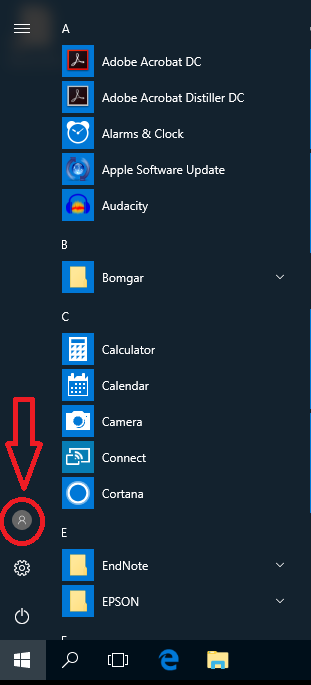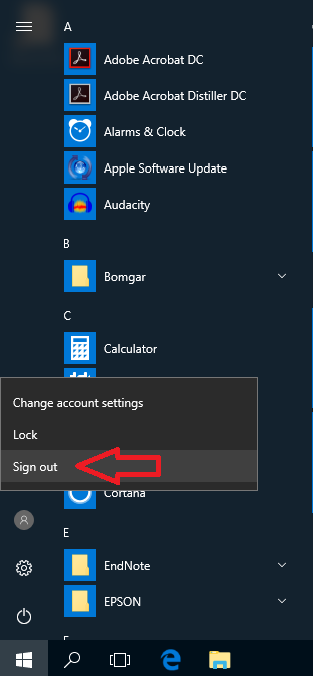...
...
...
...
...
...
...
...
...
...
...
...
...
...
...
...
...
...
...
...
...
...
...
...
...
...
...
...
...
...
What does the transition mean for me?
| Expand | ||
|---|---|---|
| ||
To ensure that university-owned computers are secure and receive the latest patches, ITS will transition all computers running Windows 7 to Windows 10. As per Microsoft: “After January 14, 2020, Microsoft will no longer provide security updates or support for PCs running Windows 7.” - https://www.microsoft.com/en-us/windowsforbusiness/end-of-windows-7-support |
| Expand | ||
|---|---|---|
| ||
Yes. After January 14, 2020, any remaining PCs not upgraded to Windows 10 will be disconnected from the network to reduce the potential for the installation of malware that takes advantage of a non-secure operating system. |
...
| Expand | ||
|---|---|---|
| ||
No. You will need to complete the new Computer Administrative Privileges Request Form. NOTE: You will NOT be required to complete the training course again as part of the Windows 10 campus-wide deployment if you already had admin access with your Windows 7 computer. The new Computer Administrative Privileges Request Form expires two years from the date of approval. For more information, please review the Computer Administrative Privileges FAQ and Request Process. |
| Expand | ||
|---|---|---|
| ||
Most home computers have “retail” versions of Windows 10 installed, typically either “Home” or “Pro”. Here at SUNY Fredonia we are using “Windows 10 Education” version. As to be expected, there are variations between versions. There are additional modifications to improve ease of use in some cases and to improve security in other cases. One item that is primarily related to ease of use is the initial absence of the many pre-installed “Metro” style shortcuts when you open the start menu. Those have been removed by default, but you are able to add any that you would like there by merely right-clicking on the start menu item and clicking “Pin to Start”. Additionally, two frequently used items that are now buried in the start menu (Internet Explorer and File Explorer) have been pinned to the taskbar for easy accessibility. As a security consideration, certain features that regularly send data to Microsoft or require frequent updating have been disabled. This includes Cortana voice command, Microsoft Ink, as well as Microsoft Edge. Microsoft Drive has also been disabled as we are not set up with corporate access and any access would be with your own separate Microsoft accounts which would not be an approved secure storage option. Microsoft Store is disabled as there are no Store apps that are on the approved software list other than the ones already installed. An additional feature that is enabled (and is recommended for enabling on your home computer) is a screensaver timeout which requires your password to get back in to the system. Depending on the security classification of the system this would be either 3 hours of inactivity or 30 minutes of inactivity. One feature that you may or may not have enabled on your home computer is Windows Firewall. This closes many of the network “holes” that malware can use to get into your computer. It is enabled on University Windows 10 computers and we highly recommend that you ensure that it is enable on your home computer for your own protection. A security feature that eliminates the vast majority of malware is enabled on the University Windows 10 computers but is not available on your home computer is AppLocker. We have a “Whitelist” of locations that programs and applications are allowed to execute from. These are typically locations that a normal “user” cannot write to and therefore Malware cannot write to and thus run from. The Whitelist covers all the approved software, but if you encounter something that it blocks that you need to run, please contact the ITS Service Center and we will either adjust the way it is installed or if needed, add it to the whitelist (if it is approved software). Lastly, both as a security measure as well as a way to ensure you can keep track of your files, you cannot create new folders on the root of the C: drive the only place you can save files on the C: drive is within your user profile (this includes Documents, Desktop, Download, Music, Picture, and Video folders). See the Answers documents “Where can I save files on my Windows 10 Desktop?” or “Where can I save Files on my Windows 10 Laptop?” for more detail. There are some other very minor differences such as how updates are handled and such, but those should not be particularly noticeable. |
...
| Expand | ||
|---|---|---|
| ||
While your office computer is being upgraded, computer labs will be available for your use. These include computers in McEwen G22, Reed Library, Thompson W203, and Thompson W207. If you require a laptop loaner, please contact the ITS Service Center at ITS.ServiceCenter@fredonia.edu or by calling (716) 673-3407. |
...
| Expand | ||
|---|---|---|
| ||
No. When a computer is replaced due to age, the old computer’s hard drive will be retained by ITS for 30 days. After that time, the computer’s hard drive will be securely erased and the computer will be prepared to be recycled by an electronics recycler. |
How do I use Windows 10?
| Expand | ||
|---|---|---|
| ||
In order to log off of a Windows 10 computer, please click the start menu icon in the bottom left corner and select the small picture above the settings gear icon. After that, select "Sign out". |
...
| Expand | ||
|---|---|---|
| ||
See the Computer Administrative Privileges FAQ and Request Process for information. |
| Expand | ||
|---|---|---|
| ||
After completing the Computer Administrative Privileges Request Process, please follow the below process to use admin access on your Windows 10 computer.
|
| Expand | ||
|---|---|---|
| ||
With the migration of the U: drives to the new servers, SFTP access to U: drives will no longer be available. For Faculty/Staff that need off campus access to their U: drives, they can use VPN (Virtual Private Network) to Remote Desktop into their campus computer or to TS1.ad.fredonia.edu. For more details on setting up VPN access, please refer to: Getting started with the Fredonia Virtual Private Network (VPN) Services There is no option for students to access their U: drives from off campus. For students that need access to their files when off campus, it is recommended that they save their files to their Google Drive which they can access from off campus. For more information on using Google Drive, please refer to: How do I use Google Drive? |
...
| Expand | ||
|---|---|---|
| ||
Training resources on Windows 10 are available on Lynda.com, Microsoft’s website, and in-person training sessions will be provided by ITS. More information on training sessions provided by ITS will be sent to the Faculty/Staff Listserv. |
...
| Expand | ||
|---|---|---|
| ||
FredApps is folder that is provisioned out to authorized Fredonia employee computers that have a specified need to save files from their local C:\ Drive on their University computer. This service is typically reserved for employees that are developers (e.g. Information Technology staff, etc.). Process to request access to FredApps:
|
Where can I save my files?
| Expand | ||
|---|---|---|
| ||
See the SUNY Fredonia Data Storage Services for more information. |
...

